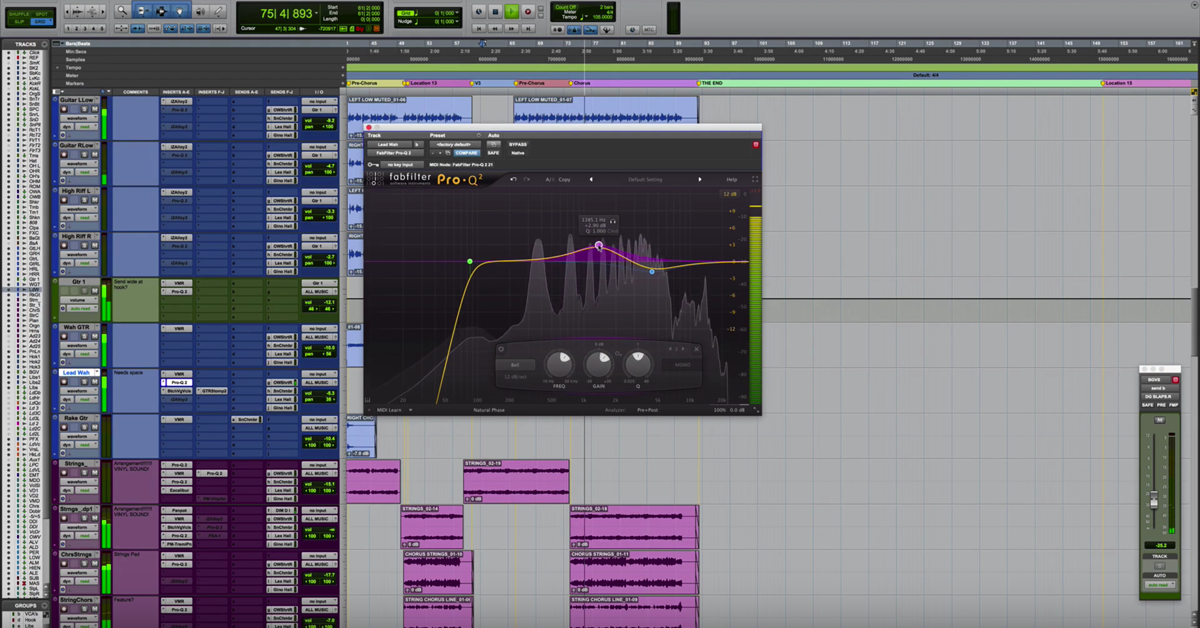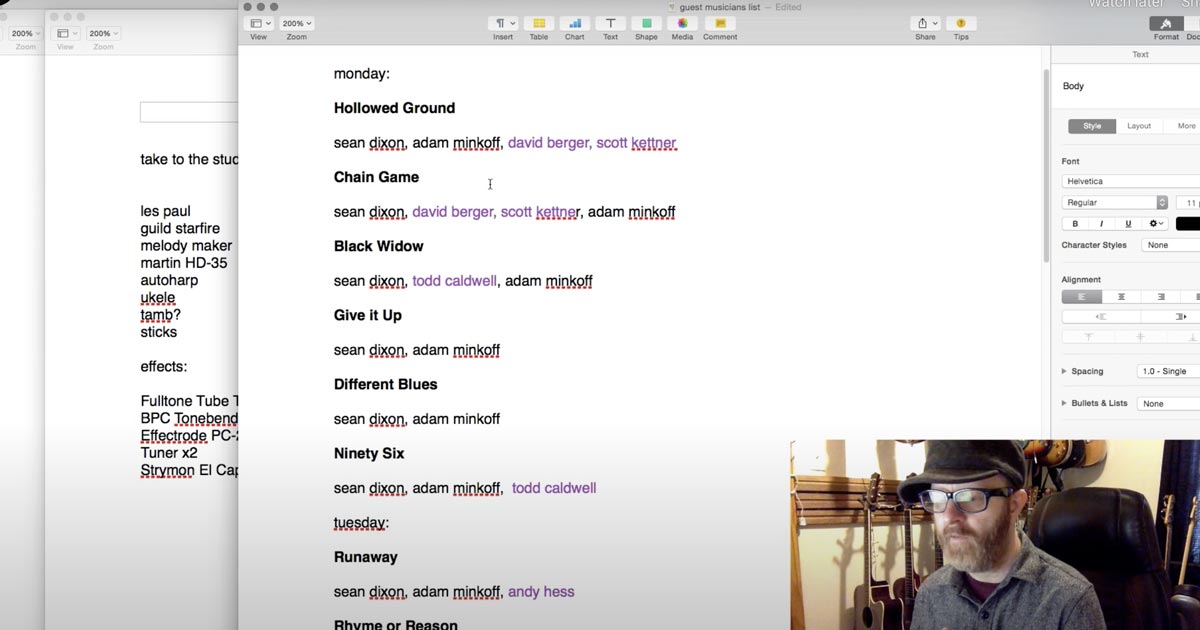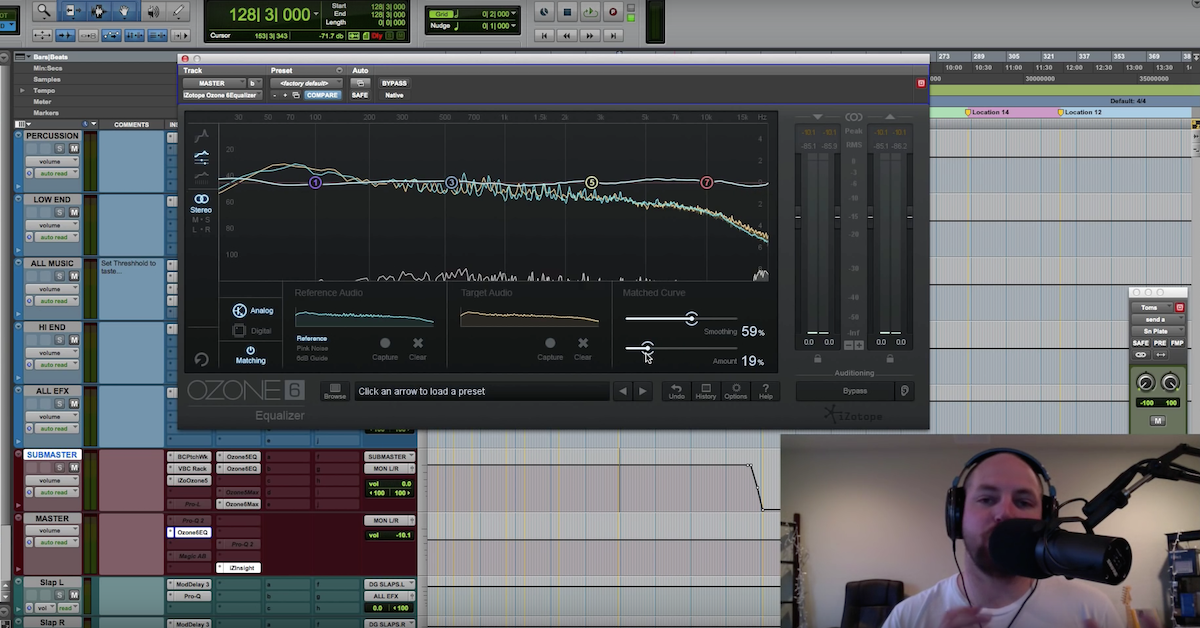7 Tips for Working Remotely as an Audio Engineer
Article Content
I moved to Los Angeles to take a job in the music industry. It’s a city saturated with talent, world-class studios, and an infrastructure that sustains a majority of the pop music and film industries. It’s really inspiring to be able to go out any night of the week, see great shows and run into talented musicians, producers and engineers pretty much everywhere you go.
Still, I find that a good percentage of the projects that I’m involved in are collaborations between myself and clients from afar. Just this year, I’ve worked with clients from Nashville, Prague, New York City, Moscow and numerous other cities. The internet can be a beautiful thing. Working from a distance can present its challenges, but also has numerous upsides. Here are the best practices that I’ve found when collaborating on music from long-distances.
1. Use a Contract
In life, we experience frustration when our expectations differ from what transpires in reality. One of the ways to ensure that everyone has similar expectations when collaborating is incorporating a contract at the onset of any given project. You can customize contracts based on the type of work one is expected to do, the rate of pay, revision policy, deadlines, etc. It provides clarity and peace of mind for everyone involved, and I can’t strongly enough recommend using a contract on each and every project you partake in.
Hopefully, using a contract ensures that each party is protected during the collaborative process, and I find that sorting out the business during the beginning stages of a project allows for a much more pleasant experience for all involved. I don’t want to have any of the financial details on my mind when I’m working. I want to use my mental energy strictly on being creative — and for this reason, I use contracts regularly.
2. Establish Your Preferred Method of Communication
Before the work starts, it’s important to develop a rapport and establish a dialog about the artistic expectations. Here are several means of communication I’ve used on various projects, and what I like (and dislike) about them.
In some ways, email can be the most useful method to generate a back-and-forth when collaborating from afar, but it also tends to be one of the most impersonal. Impersonal, though, can be great if you want the experience to be strictly professional with as little emotional interaction as possible.
An obvious benefit of using email is that it’s easy to refer back to, whether you’re at home or using a mobile device. If I’m mixing a project, I always request that the artist provides a write-up about what they hope to aesthetically accomplish with the individual songs, and also ask for a few reference tracks in that same email.
For revisions, email is fantastic but can get a bit hairy if you don’t keep track of your correspondences and subjects. It can also become a mess if you have multiple band members chiming in on the same project, but that happens in person as well.
Skype (or similar Video Conferencing Software)
One of my favorite advances in technology/things The Simpsons predicted, is video conferencing.
When working with clients in another postal code, simply nothing comes close in terms of intimacy, and the ability for directness. I love a good 30-45 minute video conference just to get to know the person or people I’ll be working with before I even open a session. If it were up to me, every project would be done in closer proximity, Skype and similar software is great for when this isn’t a possibility. I also really like the Skype “share screen feature” for when clients want to get a peek at my process or prefer to see my sessions when making revisions.
For a more robust screen-sharing option, complete with integrated DAW support, check out the truly impressive Source Connect.
Traditional Phone Calls
Always solid and mostly reliable, I prefer at least one phone call at the onset and the end of a project (if video conferencing isn’t an option). Hearing the emotion in one’s voice is essential when knowing how a client really feels about the progress of a project.
Text/Facebook Messenger/WhatsApp
To be perfectly honest, I really dislike text messaging as a means of communication. I believe that it’s a very limited way of sharing thoughts and ideas, and we either read far too much into text messages or not enough.
I’ve found WhatsApp to be pretty solid when working with clients who are located outside of the United States, and I actually enjoy its voice message/calling feature. Facebook Messenger has a similar voice message feature, which can be great for injecting a bit of human emphasis into your discussions.
Love Letter/Care Package
I’m kidding (sort of). I do, however, always love receiving a copy or copies of the final product and any associated promotional materials in the mail. The clients that do this always take a special place in my heart.
3. Deliverables Can Be a Headache
This is without a doubt, my least favorite aspect of working across long distances. Figuring out exactly what a client will be sending you, and the best way to receive it can be a real challenge. My latest album project was roughly mixed by the client/producer within Logic, who then exported dry (unaffected) and wet (processed) .wav files for me to import into Pro Tools, which is my DAW of choice for mixing. He also provided a rough mix. My mix was completed using the dry audio files. I like working this way (sometimes) because I get to start from scratch but can still refer to the processed files and the rough mix for a general idea of what the client is hoping to achieve.
For beastly Pro Tools sessions that have giant track counts and most of the heavy lifting already done by the producer or another engineer, receiving a Session Copy is my preferred way to go. Generally, when working with producers who are attached to their work, this method makes sense. If the volume automation is written, and dozens of plugins are dialed in, it’s impractical to scratch all of that work and start fresh. There may be cases in which the producer has plugins that I don’t, and in that case I ask for them to print the effect if they are committed to the sound.
These are just two examples of many different ways I may receive sessions. I’ve actually had to walk clients through how to export audio files out of their DAW of choice on numerous occasions. This part of the process is highly technical, time-consuming and not creative. Usually, if there’s one period during which I find myself exceedingly frustrated at my job, it’s during this time in which I’m figuring out how to get the sessions ready.
I’ve yet to mention the numerous means with which a client and engineer can actually exchange files. I have an upgraded Dropbox account, which usually does a solid job, aside from one particular project on which every file I downloaded from a shared folder was unreadable upon download. Very strange. For sessions that are less than 2GB in size, I really enjoy WeTransfer. Unfortunately, I don’t remember the last session I worked on that wasn’t well over 3GB. FTP is arguably the most secure option for large, high profile exchanges.
Regardless of which of the above options you choose, figuring out a system that works, and then sticking with it until the project is complete is essential.
4. Discuss Aesthetics Before Any Major Work Is Done
As I previously mentioned, I find it helpful for the artist to provide a summary of what they’re hoping to achieve with individual pieces of music, along with at least one reference track.
Gilded Lows, a band I worked with last year, even provided me a Spotify playlist to listen to before mixing a single. In regards to the summary, the more descriptive the better. Artists sometimes use abstract concepts to describe the kind of feeling they are hoping to elicit with their art, and I really enjoy engaging in conversations that aren’t so technical in nature. I spend enough time tweaking plugins, riding faders, and the like, so it’s always refreshing for me to get a glimpse of the artistic process.
On some occasions, additional recording will be done, in which I’ve found a preparatory phone call to be extremely helpful. Foxchase did some vocal recording for me earlier this year, and we had a nice 30 minute phone call prior to him tracking. During our chat, I “produced” him the way I would’ve had I been present for the recording session, and this included directions on vocal intensity throughout the different sections of the song, potential ideas for harmonies, and even how to deliver certain phrases or words. He knocked it out of the park, by the way, and I can’t strongly enough recommend him if you need a vocalist.
I prefer establishing this type of dialog at the beginning stages of a project because if I’m working as a mix engineer, for example, I might make some macro decisions about the mix and put in a great deal of work that ends up getting scrapped if my vision for the song differs from that of the artists. This happens rarely, as most likely I’m hired as a mix engineer because artists trust my vision, but it never hurts to be on the same page, aesthetically speaking.
5. Revisions
As I mentioned earlier, there should be a clear outline of your revision policy written into a contract. How many revisions are included? How much do they cost? I usually include two revisions into the initial cost, and charge more if additional revisions are requested.
I am all about doing work on a production until it’s right, so I catch myself being lenient about this policy every once in a while. Be warned though — artists tend to chase perfection. They’re hunting after a feeling, which isn’t necessarily tangible, and this is part of why they’re artists in the first place.
At some point, that pursuit of perfection becomes detrimental to a project and a waste of time. This issue can be compounded if you’re working with a band comprised of multiple members. The bassist might feel different about the balance than the drummer; the singer might dislike the level of guitars that the guitarist is content with. Because of this, it’s not uncommon to land somewhere between 10-15 revisions on certain songs.
I’ve used spreadsheets on projects to keep track of revisions, but to be honest, email is my preferred method. A straightforward email, with clearly-worded instructions as to how to approach the revisions should do the job. I have to mention that my latest project; a four-song EP that I mixed for the band Pushing Static was one of the smoothest, most stress-free musical collaborations I’ve ever been a part of, and I give a lot of the credit to the frontman, Asher, who provided very clear artistic concepts at the beginning of the project. Because of this, the revisions were also straightforward, minimal and definitely in service of the song.
6. Deadlines Are Great
Helpful in avoiding dozens of revisions is setting a deadline for your project. Songs are like perishable food items; they may go stale or rotten. Establishing a deadline at the onset of a project helps in making sure that all involved parties capture their musical enthusiasm while it’s still fresh.
I enjoy pressure and would prefer to mix a song in a day or two, I find that if the process drags on much longer than that, my musical inspiration for a particular song may go stale.
7. Enjoy the Process
When collaborating, whether in close proximity or from afar, I find it essential to try and enjoy the process. Use all of the aforementioned means to inject some humanity and fun into the journey, it’s important when you don’t have the benefit of proximity to another human. When I listen back to projects I worked on years ago, I often feel a greater sense of pride and nostalgia about all that went into the process than I do the final .wav file.
If the process on any given project is filled with turmoil, poor communication and technical hassle, I’m going to recall that when listening back. Keeping this in mind allows me to grow my client base, as with anything in life, people are generally more interested in continuing working with someone that they enjoy collaborating with.
Thanks to the ability to connect with people located anywhere on the planet via the internet, I check back in with past clients with regularity, and I credit this as one of the main reasons why I always have several projects on my plate at any given moment — which is how I like it.








